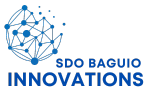I.G.L.A.P. – Immediate Grasp of Learning and Activities Program
SAMUEL D. LACHICA
School Head
Proponent
The Problem
The limited access to educational resources during blended learning, especially when in person classes are suspended, poses a significant problem.
This disrupts students’ learning experiences, leading to gaps in knowledge, decreased academic performance, and long term educational setbacks.
The Context
Teachers have limited resources, training and caught unprepared in unforeseen situation such as late declaration of class suspension.
Learners suffer from a lack of effective instruction and unfair assessment.
Stakeholders Pain Points
LEARNERS
-Struggle to access necessary materials
-Increased Learning Gaps
TEACHERS
-Difficulty in impacting lesson
effectiveness and engagement-Increased need to create alternative materials and methods for learners with limited access.
PARENTS
-Struggle to support their children’s learning at home without adequate resources or knowledge
-Pressure to provide devices and internet connectivity
BARANGAY OFFICIALS
-Expected to assist in bridging the resource gap
-Challenge of coordinating efforts to ensure equitable access to education for all residents.
The Solution
Well trained teachers become catalysts for educational equity, ensuring consistent, high quality learning even in the face of resource limitations.

Challenges
Teacher Preparedness for Emergency -Based Learning
Limited Access to Technology and Learning Materials
Student Engagement and Participation
Continuous technical and pedagogical support.
Needed Resources
-Teacher Training Programs
-Digital Devices
-Printing Materials and Devices
-Educational Software and Platforms
Source:
Partnerships with Stakeholders Approach local businesses, community organizations, and foundations to support the program through funding, donations, or in kind support
Monitoring & Evaluation
Regular Progress Reports:
Detailing the status of resource distribution, teacher training sessions, and student support initiatives.
Feedback Mechanisms:
Surveys and feedback forms for students, teachers, and parents to gather insights on the effectiveness of the resources and support provided.
Usage Analytics :
Tracking the usage of digital resources and monitoring login frequencies, time spent on educational platforms, and completion rates of online modules
Indicators for Success:
Higher attendance rates in virtual sessions compared to previous
periods.
Improvement in students’ grades and test scores over time.
Reduction in the number of students falling behind in their
coursework.
Number of teachers trained in using digital tools and their
confidence levels in conducting blended learning.

SAMUEL D. LACHICA
School Head
Proponent

